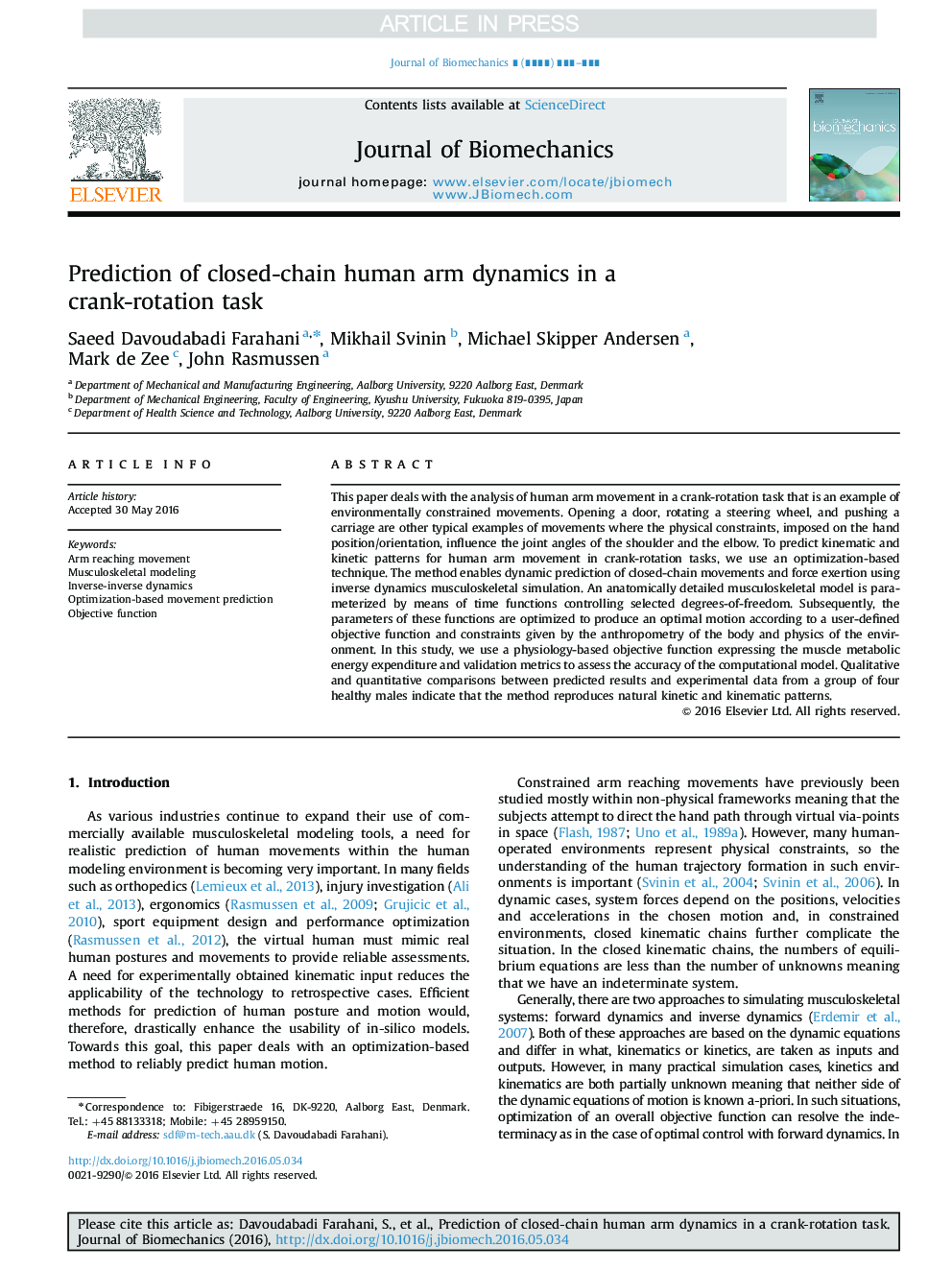| Article ID | Journal | Published Year | Pages | File Type |
|---|---|---|---|---|
| 5032440 | Journal of Biomechanics | 2016 | 10 Pages |
Abstract
This paper deals with the analysis of human arm movement in a crank-rotation task that is an example of environmentally constrained movements. Opening a door, rotating a steering wheel, and pushing a carriage are other typical examples of movements where the physical constraints, imposed on the hand position/orientation, influence the joint angles of the shoulder and the elbow. To predict kinematic and kinetic patterns for human arm movement in crank-rotation tasks, we use an optimization-based technique. The method enables dynamic prediction of closed-chain movements and force exertion using inverse dynamics musculoskeletal simulation. An anatomically detailed musculoskeletal model is parameterized by means of time functions controlling selected degrees-of-freedom. Subsequently, the parameters of these functions are optimized to produce an optimal motion according to a user-defined objective function and constraints given by the anthropometry of the body and physics of the environment. In this study, we use a physiology-based objective function expressing the muscle metabolic energy expenditure and validation metrics to assess the accuracy of the computational model. Qualitative and quantitative comparisons between predicted results and experimental data from a group of four healthy males indicate that the method reproduces natural kinetic and kinematic patterns.
Related Topics
Physical Sciences and Engineering
Engineering
Biomedical Engineering
Authors
Saeed Davoudabadi Farahani, Mikhail Svinin, Michael Skipper Andersen, Mark de Zee, John Rasmussen,
